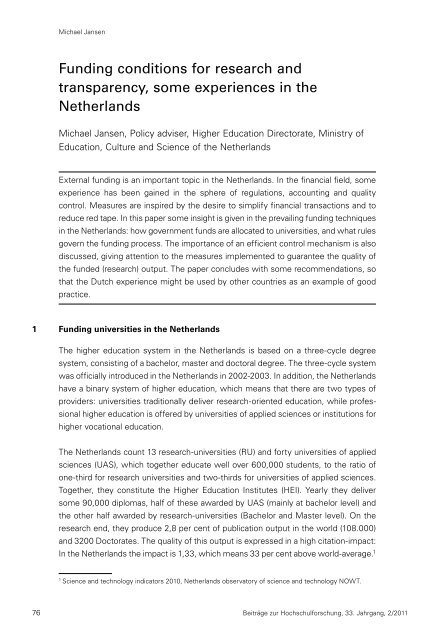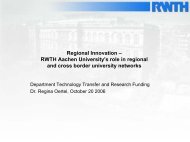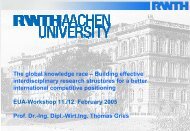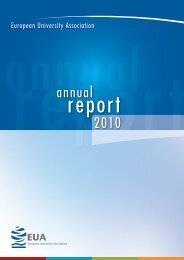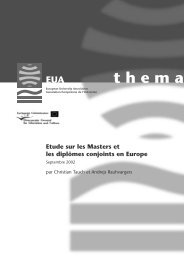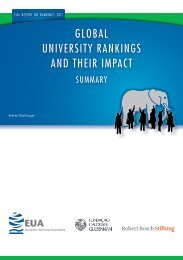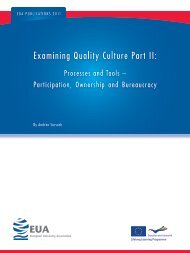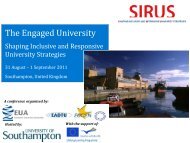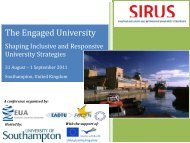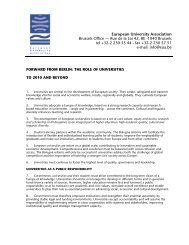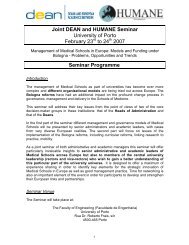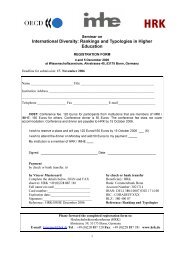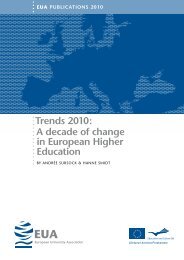Beiträge zur Hochschulforschung - European University Association
Beiträge zur Hochschulforschung - European University Association
Beiträge zur Hochschulforschung - European University Association
Create successful ePaper yourself
Turn your PDF publications into a flip-book with our unique Google optimized e-Paper software.
76<br />
Michael Jansen<br />
Funding conditions for research and<br />
transparency, some experiences in the<br />
Netherlands<br />
Michael Jansen, Policy adviser, Higher Education Directorate, Ministry of<br />
Education, Culture and Science of the Netherlands<br />
External funding is an important topic in the Netherlands. In the financial field, some<br />
experience has been gained in the sphere of regulations, accounting and quality<br />
control. Measures are inspired by the desire to simplify financial transactions and to<br />
reduce red tape. In this paper some insight is given in the prevailing funding techniques<br />
in the Netherlands: how government funds are allocated to universities, and what rules<br />
govern the funding process. The importance of an efficient control mechanism is also<br />
discussed, giving attention to the measures implemented to guarantee the quality of<br />
the funded (research) output. The paper concludes with some recommendations, so<br />
that the Dutch experience might be used by other countries as an example of good<br />
practice.<br />
1 Funding universities in the Netherlands<br />
The higher education system in the Netherlands is based on a three-cycle degree<br />
system, consisting of a bachelor, master and doctoral degree. The three-cycle system<br />
was officially introduced in the Netherlands in 2002-2003. In addition, the Netherlands<br />
have a binary system of higher education, which means that there are two types of<br />
providers: universities traditionally deliver research-oriented education, while profes-<br />
sional higher education is offered by universities of applied sciences or institutions for<br />
higher vocational education.<br />
The Netherlands count 13 research-universities (RU) and forty universities of applied<br />
sciences (UAS), which together educate well over 600,000 students, to the ratio of<br />
one-third for research universities and two-thirds for universities of applied sciences.<br />
Together, they constitute the Higher Education Institutes (HEI). Yearly they deliver<br />
some 90,000 diplomas, half of these awarded by UAS (mainly at bachelor level) and<br />
the other half awarded by research-universities (Bachelor and Master level). On the<br />
research end, they produce 2,8 per cent of publication output in the world (108.000)<br />
and 3200 Doctorates. The quality of this output is expressed in a high citation-impact:<br />
In the Netherlands the impact is 1,33, which means 33 per cent above world-average. 1<br />
1 Science and technology indicators 2010, Netherlands observatory of science and technology NOWT.<br />
<strong>Beiträge</strong> <strong>zur</strong> <strong>Hochschulforschung</strong>, 33. Jahrgang, 2/2011


